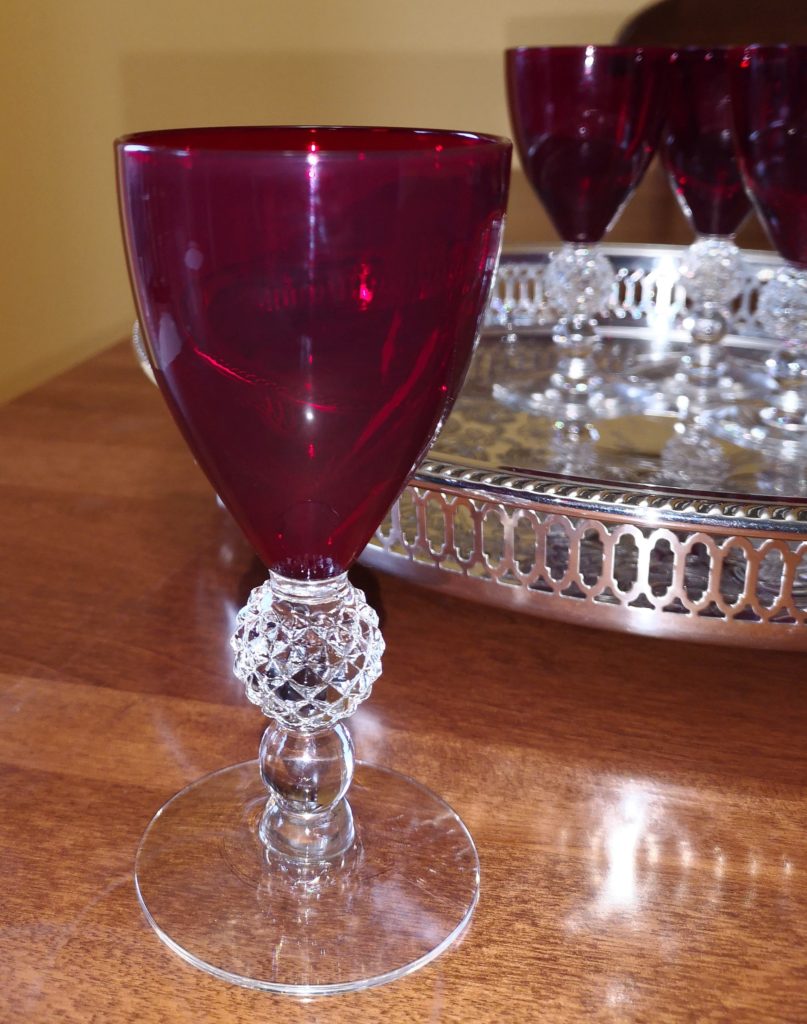 I picked up a set of five (one was chipped) of these stems when I was in the U.S. earlier in the year. I figures, and I was right, that I would have difficulty identifying them as their shape is fairly common I think.
I picked up a set of five (one was chipped) of these stems when I was in the U.S. earlier in the year. I figures, and I was right, that I would have difficulty identifying them as their shape is fairly common I think.
I am guessing that these are a small wine at 5 1/2 inches tall with openings of 2 1/2 inches. There is a narrow optic.
I do not really know the difference between uranium and vaseline glass. The two terms see to be used interchangeably by some. This is now the Encyclopedia of Glass by Mark Picvet defines each:
“Uranium Glass – A brilliant fluorescent yellowish-green glass produced by the addition of uranium oxide. Due to the nature of the metallic element uranium, uranium glass is mildly radioactive (but not harmful) and glows brightly under a black light. It was first made in the 1830s in Germany.”
“Vaseline Glass – Glass made with a small amount of uranium oxide (usually 1% or 2%) that imparts a light greenish-yellow color (a greasy appearance like vaseline). Vaseline glass usually glows under a black light. Vaseline-like glass was first made by the Romans; however, it was not used in glass production in any quantity until the mid-nineteenth century. The term “Vaseline” was not used until about 1937. Note that the English usually refer to Vaseline glass as “Lemonescent” which has also been called canary, yellow, uranium, topaz, magic, Canaria, |Chameleon, Anna Yellow, Annagrun, and Lenora Green.”
I am guessing that my stems are Vaseline. Any hints as to their provenance will be appreciated!

